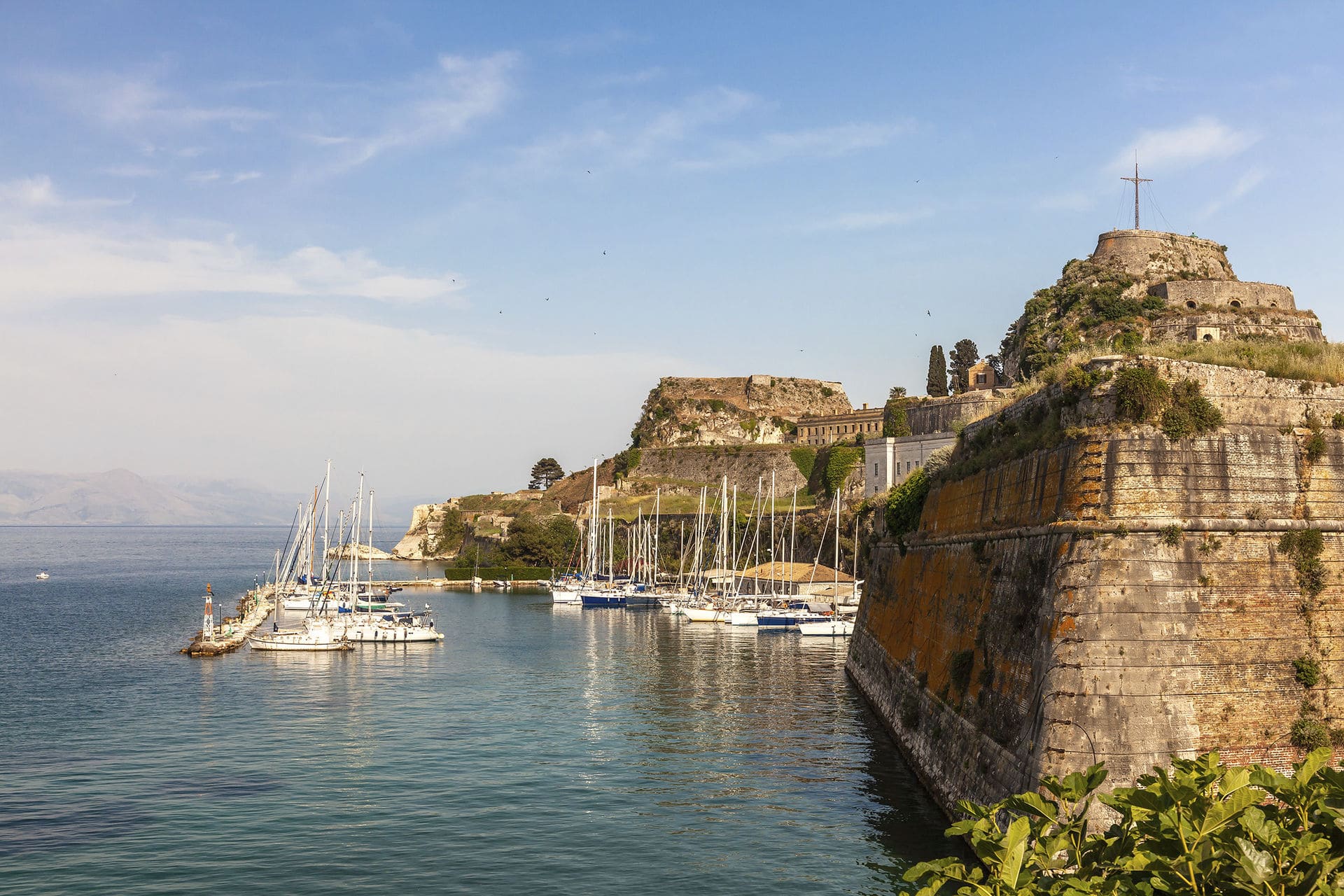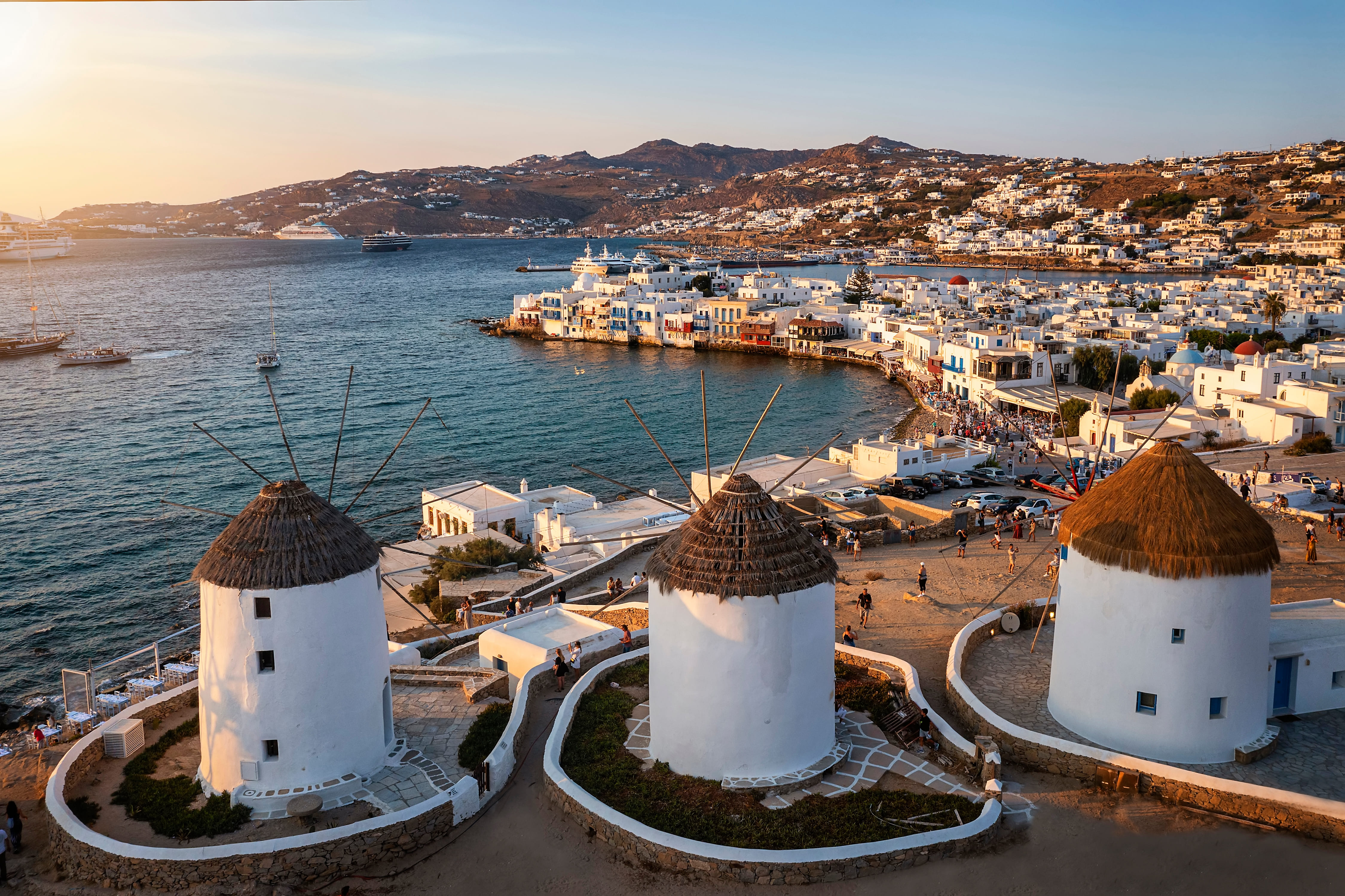Spotlight: All About Trulli Houses - History, Architecture and The Best Trulli for Your Holiday
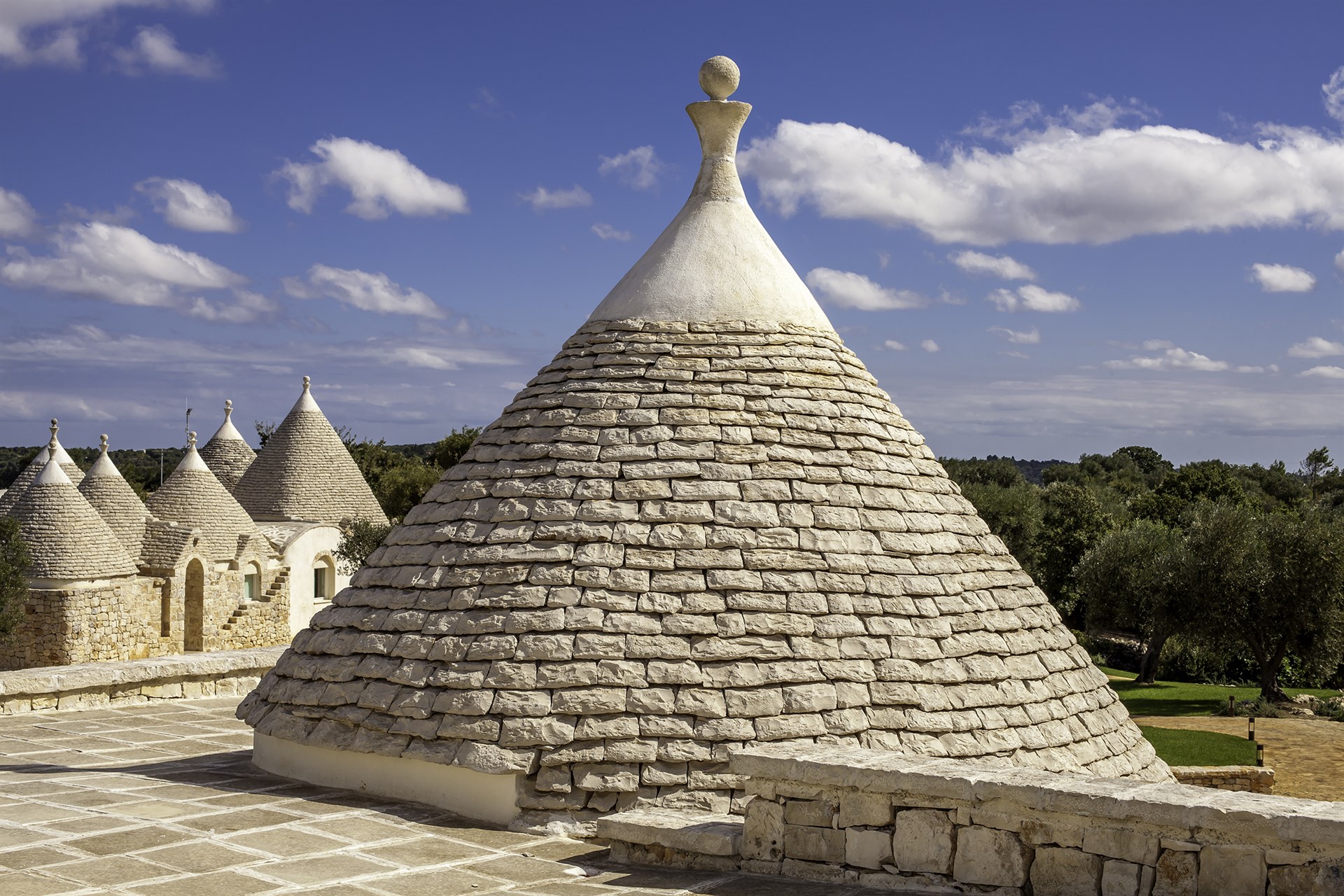
There is probably nothing that signals your arrival in Puglia more than the iconic sight of a trullo, the unique conical construction found in the area of the Valle d’Itria. Some would say part of the soul of Puglia is seen in these historical properties.
In this article, we’ll explore what makes trulli so unique, including why the buildings are part of one of the region’s most famous UNESCO World Heritage Sites. We’ll also run through some of our favourite recommendations for trulli in Puglia - lovingly refurbished, charmingly characterful, and entirely luxurious.
Trulli houses - what is a Trullo and Trulli?
A trullo, plural trulli, is a type of traditional stone dwelling with a cone-shaped roof. They are unique to the Puglia region of Italy, in particular the Itria Valley, where, nestled among the lush greenery, the olive trees and the vineyards, you’ll find the town of Alberobello.
Alberobello is by far the best place to see trulli: here, rows of trulli jostle for space along winding streets, their whitewashed limestone exteriors glistening in the Italian sun. The town is home to over 1,500 of the structures - enough for it to be designated a UNESCO World Heritage Site in 1996.
With their charming interiors, rustic stone construction, and unique ambience, the trulli houses of Puglia are the perfect option for those seeking a getaway with a difference: a luxury villa with striking cultural heritage.
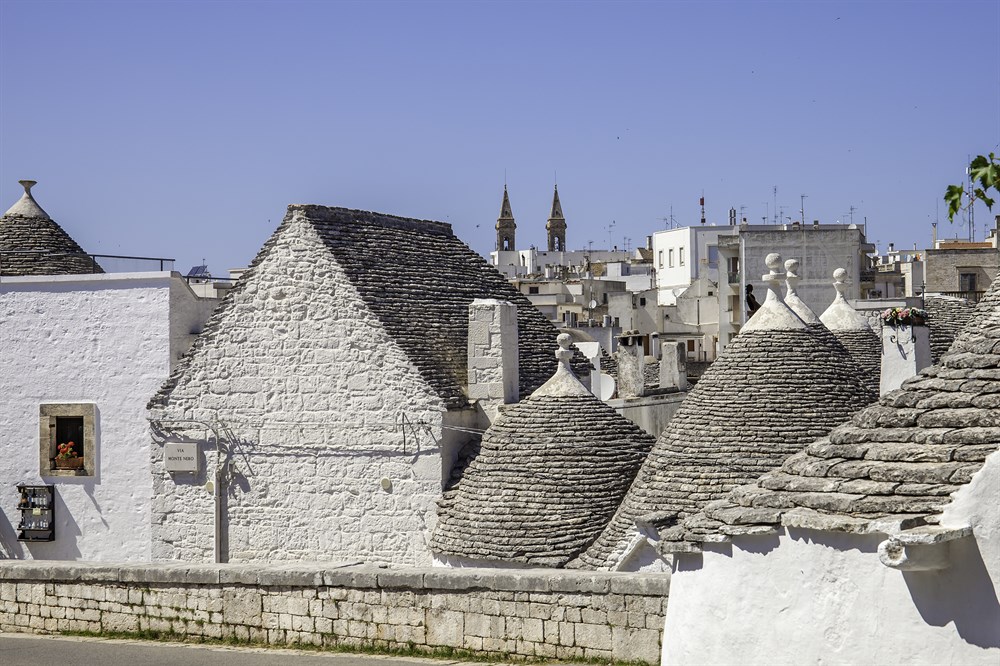
History of Trulli houses
According to UNESCO, the trulli of Alberobello date back to the mid-fourteenth century. They can be found at many locations in and around the Itria Valley, but their highest concentration is in the quarters of Rione Monti and Aja Piccola in Alberobello.
How are Trulli houses built?
Trulli are built using a dry stone construction method, evidence of which dates back thousands of years in areas across the Mediterranean.
This is a large part of what makes trulli so unique. Unlike other forms of masonry, dry stone construction does not use mortar or cement. Instead, the builders of the trulli carefully selected rocks, a mixture of limestone excavated onsite and boulders collected from the surrounding area. They chose the rocks for their weight and shape, and fitted them into place expertly, creating a stable structure by allowing each stone to rest on and support each other.
This style of construction is a testament to the ingenuity of Puglia’s historical inhabitants, and the sight of the coned roofs still standing all these centuries later serves as a reminder of the region's rich history. More than this, it also provides excellent thermal insulation, keeping the interior of each trullo warm in the winter and cool in the summer.
Why were Trulli Houses built?
While the trulli today make the perfect luxury villas in Italy, they were originally built with a quite different purpose in mind.
Perhaps the most popular explanation for the unique construction and prevalence of the trulli is that they were built as an early form of tax avoidance. In the fourteenth and fifteenth centuries, around the time that the first trulli houses in Puglia started to show up, the region’s rulers began levying high taxes on property.
Residents were none too pleased. But they couldn’t simply do without dwellings. They settled on an unconventional solution: why not pretend that they didn’t have any permanent residences at all?
They began to avoid mortar in favour of dry stone construction, for the simple reason that dry stone dwellings are easier to dismantle. When the early inhabitants of the trulli heard the tax collectors were approaching, they could remove the roofs and perhaps even take down their houses altogether. They could then avoid having to pay the onerous property tax. And when the tax collectors moved on, they could simply rebuild their homes.
While this is just one theory for the emergence of the trulli, it is an entertaining one - and one that highlights the creativity and inventiveness of the historical people of Puglia.
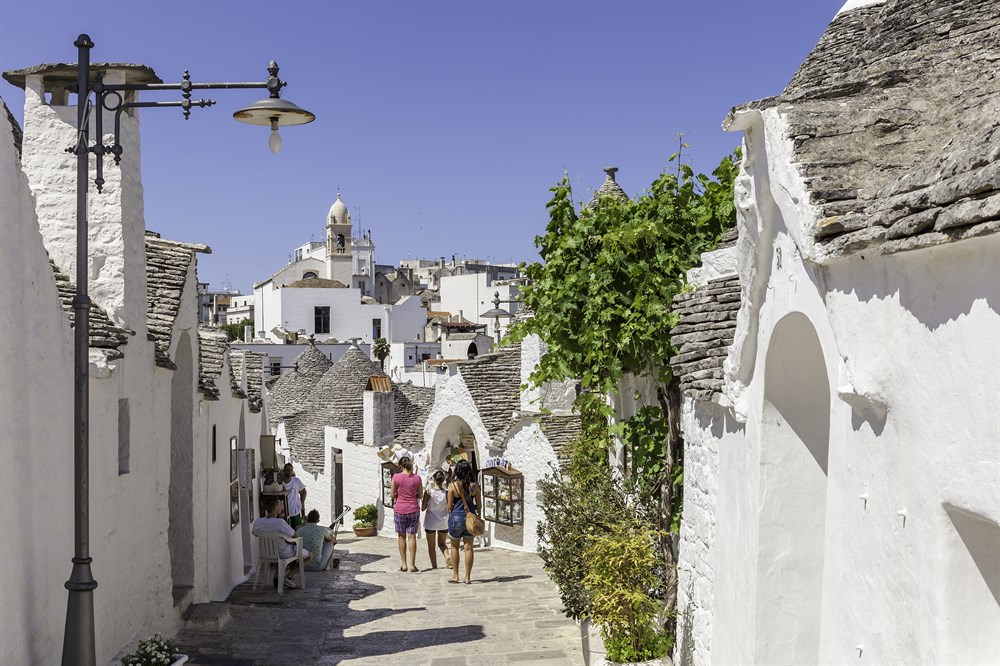
Cultural significance of the Trulli today
All this contributes to the ‘outstanding universal value’ that makes the trulli of Alberobello a UNESCO World Heritage Site.
They are a major draw for tourists seeking an authentic Italian experience - one of the main attractions that help make a luxury holiday in Puglia so attractive.
More than this, trulli are a major source of local pride and cultural identity in the region. They’re a striking example of traditional craftsmanship - and, in many cases, exceptionally well preserved, with UNESCO noting that: ‘By virtue of the simplicity in design and construction of the trulli it has been possible to preserve their authentic form and decoration intact.’
View our trulli villa collection
Trulli houses in Puglia
Here at The Thinking Traveller, we have an exclusive family of luxury villas in Puglia - many of which are converted trulli houses.
Here are just six of our favourites.
Trulli for family stays
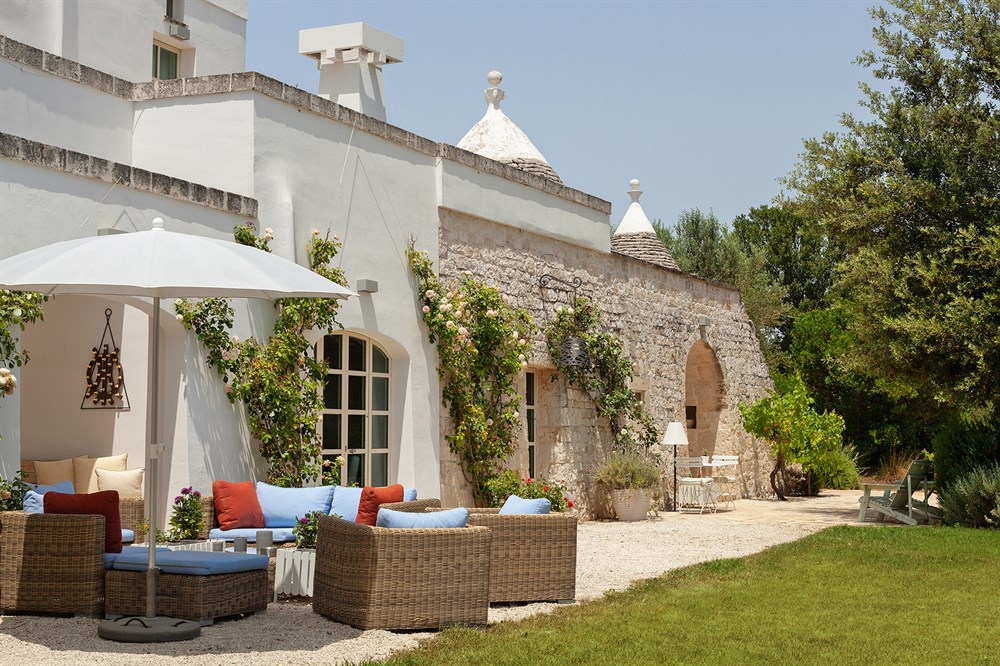
Trullo Rosmarino
Trullo Rosmarino offers enough space for the whole family to unwind, with five bedrooms, five bathrooms, a panoramic pool, and extensive gardens fanning out over three acres of space and transitioning seamlessly into the open spaces of the countryside beyond.
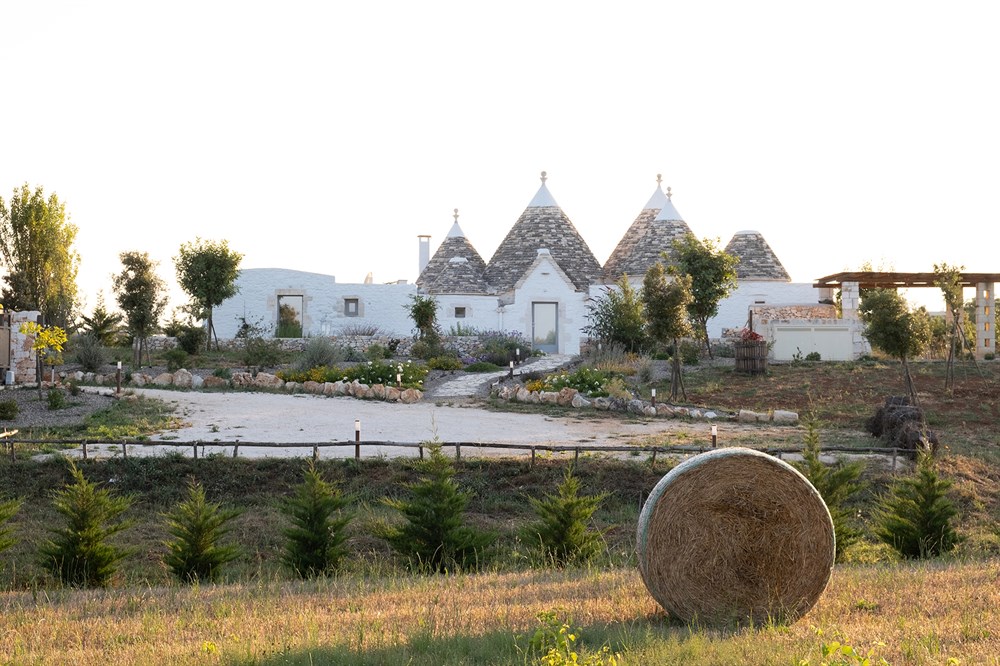
OttoConi
At OttoConi, you and your family will experience authentic Puglian relaxation, gazing out over golden wheat fields and breathing in the subtle, woody aroma of the olive trees in the surrounding groves. Minimalist, rural, and utterly charming.
Trulli for couples

Fichimori
This gorgeous stone-whitewashed getaway is nestled amongst olive groves. The lovingly refurbished Fichimori can sleep 4, but we think it’s perfect for couples. The beach effect shallow pool and irresistible jacuzzi are just two of its more playful features.

Trullo Agathea
Cosy and charming without ever losing its open airiness, Trullo Agathea is an ideal fit for couples who want to create their own oasis of calm in gorgeously refurbished surroundings.
Trulli for large groups

Trulli Andrea
With space for twelve guests across six bedrooms, Trulli Andrea is perfect for bigger groups, whether you’re going away with the extended family or with friends. The villa’s al fresco dining areas and two pools offer the perfect opportunities to stay cool in the Puglian sun, while winding stone-flagged paths lead you through expansive gardens between the two trulli houses.
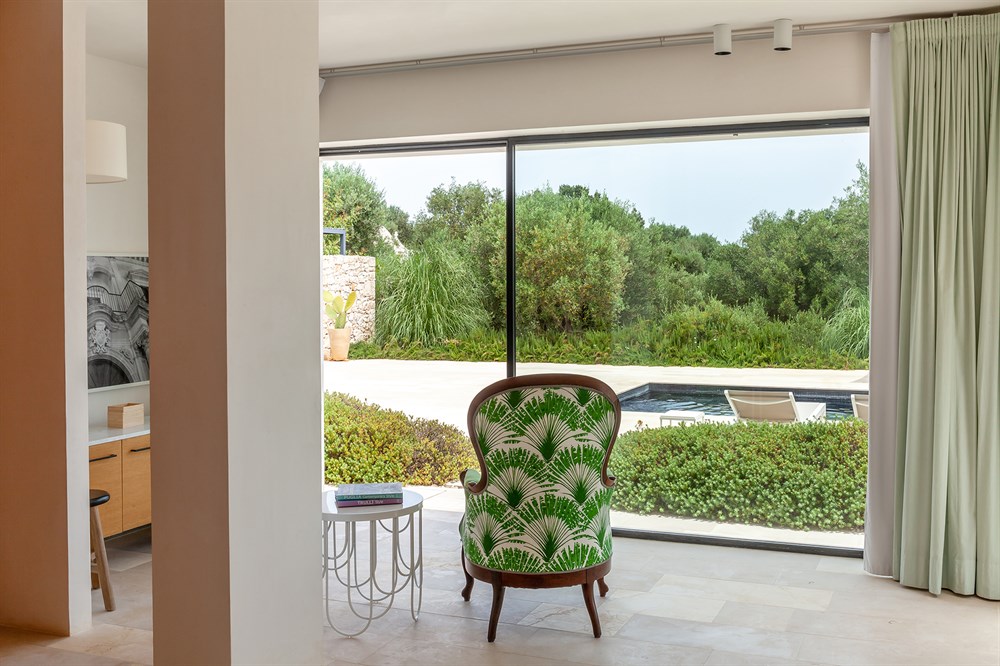
Trullo Pinnacolo
Also with six bedrooms, Trullo Pinnacolo offers an enticing blend of the traditional and the modern, with the crisp lines and white exteriors of the converted villa juxtaposed against the rounded edges of the authentic trullo.
We hope you’ve found this guide to the trulli informative and interesting. If it’s gotten you excited to get started thinking about your next luxury holiday, please don’t hesitate to contact us: our experts are always on hand to help you find the perfect destination for everything from a couples’ retreat to a large group holiday.
